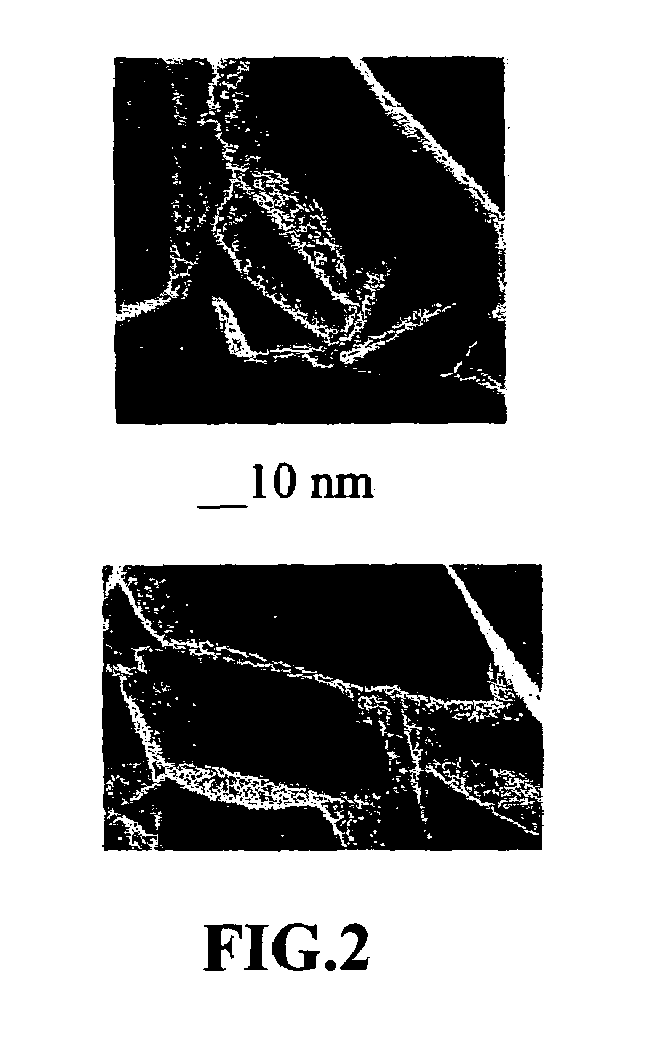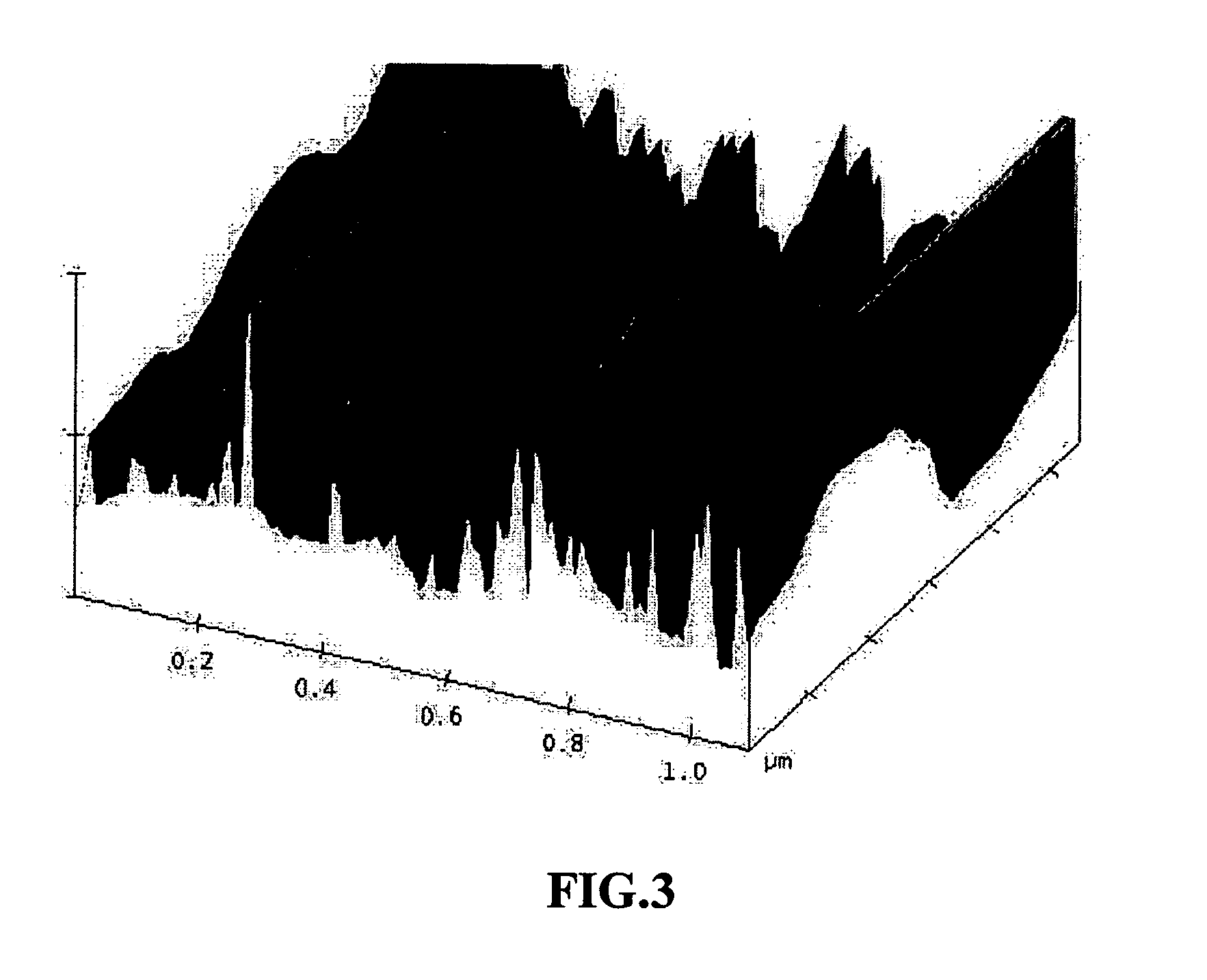Process for producing nano-scaled platelets and nanocompsites
a nano-scaled, nano-composite technology, applied in single-layer graphene, silicon compounds, chemistry apparatus and processes, etc., can solve the problems of high material cost, tedious washing step, and high material cost, and achieve easy dispersion, reduce the size of the platelet, and high conductivity
- Summary
- Abstract
- Description
- Claims
- Application Information
AI Technical Summary
Problems solved by technology
Method used
Image
Examples
example 1
Nano-Scaled Graphene Platelets (NGPs) from Graphite Flakes
[0057]One hundred grams of natural graphite flakes ground to approximately 20 μm or less in sizes were sealed in a hydrogen gas-filled steel container (schematically shown in FIG. 1) at room temperature and 10 atm for four hours to yield the desired gas-intercalated graphite (GIG). Subsequently, the pressure was reduced to 1 atm by releasing the excess gas out of the container. The GIG was found to have been exfoliated to some extent with a small expansion ratio (exfoliated flake thickness / GIG flake thickness) of approximately 2.5 / 1 to 6 / 1. A portion of this product was quickly transferred to a furnace at 250° C. to induce extremely rapid and high expansions of graphite crystallites with an expansion ratio of approximately 80 to 150. The thickness of individual platelets ranged from single graphene sheet to approximately 30 graphene sheets. A small portion of the exfoliated graphite particles were then ball-milled in a high-e...
example 2
NGPs from Short Carbon Fibers
[0058]The procedure was similar to that used in Example 1, but the starting material was carbon fibers chopped into segments with 0.2 mm or smaller in length prior to the gas intercalation treatment. The diameter of carbon fibers was approximately 12 μm. No significant exfoliation was observed immediately after pressure release, but great expansions were achieved after rapid exposure to heat at 600° C.
example 3
NGPs from Graphitic Nano-Fibers (GNFs)
[0059]A powder sample of graphitic nano-fibers was prepared by introducing an ethylene gas through a quartz tube pre-set at a temperature of approximately 800° C. A small amount of Cu—Ni powder was positioned on a crucible to serve as a catalyst, which promoted the decomposition of the hydrocarbon gas and growth of GNFs. Approximately 2.5 grams of GNFs (diameter of 10 to 80 nm) were intercalated with hydrogen gas at 10 atm. After pressure gas release, the intercalated particles were found to be exfoliated to a great extent (without an expansion ratio measurement). The sample was then rapidly heated to approximately 250° C. to further promote expansion.
PUM
| Property | Measurement | Unit |
|---|---|---|
| thickness | aaaaa | aaaaa |
| thickness | aaaaa | aaaaa |
| thickness | aaaaa | aaaaa |
Abstract
Description
Claims
Application Information
 Login to View More
Login to View More - R&D
- Intellectual Property
- Life Sciences
- Materials
- Tech Scout
- Unparalleled Data Quality
- Higher Quality Content
- 60% Fewer Hallucinations
Browse by: Latest US Patents, China's latest patents, Technical Efficacy Thesaurus, Application Domain, Technology Topic, Popular Technical Reports.
© 2025 PatSnap. All rights reserved.Legal|Privacy policy|Modern Slavery Act Transparency Statement|Sitemap|About US| Contact US: help@patsnap.com



